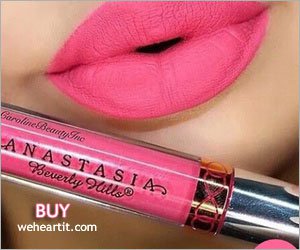Dernières Nouvelles
Page d'accueil
- Actualités locales, arabes et internationales
- Interviews Artistiques ou Culturelles/ Interviews d'artistes
- Les titres
- Sport
- Vidéos
- Célébrités
- Entrevues
- Affaires
- Mode
- Santé et Nutrition
- Vues & Analyses
- Presse
- Les infos les plus Lues
- Météo
- Evasion
- Autos
- Dessin animé
- Les Femmes à la Une
- Actu Stars & Personnalités
Sport
Culture
Business
Divertissement
Mode
Santé
Voyages et Evasion
Décor
Philippines: Land of a thousand guns

Coroners taking the body of a man killed by unidentified gunmen in Manila. Under President Rodrigo Duterte, the firearms
Manila - Arab today
At a row of shops in the basement of the Makati Cinema Square in southern Metro Manila, Bien Vijungco deftly demonstrates the proper use of defensive knives he sells at his stall.
“It always pays to be prepared for anything,” Vijungco tells a prospective customer — one among a steady stream of store visitors he had for that day.
Individual and home security is a serious concern in the Philippines and businesses like that of Vijungco’s are doing well in these times.
The 46-year-old former bodybuilder’s main line of business is selling parts and accessories for firearms for both defence and outdoor recreation. Knives and other are just part of his multifarious range of products he displays at his shop, named Survival and Outdoor Equipment of “SOE.” From the cutlery assortment, he motions to show this reporter a “Hera” kit that converts a 9mm SigSauer pistol to a carbine. A carbine is a shorter version of a rifle but just as lethal. “Turn your short firearm into a carbine, this makes for easier, more accurate shooting,” he suggests.
Vijungco is among the number of businessmen filling in the need for Filipinos not just for security products but for hobbies and other serious concerns — including firearm-based home defence.
Booming business
The business in firearms is currently flourishing in the Philippines and its development is clearly illustrated by the growth in the number of shops selling guns.
Vijungco told Gulf News that the number of stores selling firearms at the Makati Cinema Square had evolved from just three stalls and an indoor shooting range during the mid-1990s — Armscor — to more than 10 now.
“From 2004 onwards, the number of shops started to increase,” he said.
Gun stores sprouted like mushrooms not just in Makati City, but in other parts of Metro Manila and various parts of the country. But Vijungco says the firearm business had a golden period when the country was under President Gloria Macapagal-Arroyo which was from 2001 to 2010. “The worst time was when President Benigno Aquino III’s time,” he said.
As a measure to curb proliferation of unregistered firearms, then President Benigno Aquino III signed in 2013 Republic Act (RA) 10591, which mandates stricter rules for gun owners to renew their licences to possess firearms every two years, registration of the firearms needs to be renewed every four years. In that period there are an estimated one million unregistered guns.
Due to the implementation of the RA 10591 gun sales declined by as much as 80 per cent and at least 8,000 people who were employed in the legitimate gun-making industry, security and peripheral businesses, lost their jobs.
But under the current administration under President Rodrigo Duterte, the firearms business is starting to pick up and appears to be on a resurgence as more people realise the need to have their guns properly documented with authoritiesm Vijungco says.
Neal Ceniza, the branch manager of Armscor shop and service centre at Krame Arcade in Quezon City, said business is starting to pick up these days that aside from their stall selling firearms and accessories, they opened in mid-February a new shooting range at their shop adjacent to the Philippine National Police headquarters in Camp Rafael Crame.
Armscor is among the recognised pioneers in the business of manufacturing and selling guns as well as ammunition. Other than producing firearms and ammunition, it operates five shooting ranges — three in Luzon, and one each in the Visayas and Mindanao.
Its ammunition factory in Marikina operates 24 hours on three shifts.
Jho Ibay, head of Armscor’s Corporate Communications says: “Filipinos have a certain affinity to guns and whatever opposition some people have to firearms seems to be overwhelmed by the positive opinion on guns and gun ownership.”
Aside from Armscor, there are a number of other gun makers in the country, but most of them manufacture pistols.
Men in the Philippines — and increasingly women — use and flaunt their guns as matrons would their jewellery or gentlemen their fine Swiss watches.
Ibay says sales of guns from Armscor had been witnessing growth over the past years and a couple of years back, they have gone to exporting pistols, as well as rifles and shotguns under the brand name Rock Island Armory (RIA), as well as ammunition of various popular local calibres. “We ship several million rounds of ammunition from at least 20 countries. The Philippines is the biggest importer and manufacturer of 1911 .45 calibre pistols and almost all of these are manufactured by Armscor,” she said adding that only about a quarter of the firm’s production of guns are consumed by the Philippine market, the rest are shipped abroad.
Ibay says aside from security, an increasing number of Filipinos buy guns mainly for sport and recreation. Ibay says home security is still the main reason cited by people when they purchase firearms from them.
One person who has closely watched the growth of shooting sport among Filipinos is Jun Miranda-Martinez.
The 50-year-old gun buff, who moderates a number of firearm-related Facebook sites, said the growth of shooting sport got a boost with the establishment of the Philippine Practical Shooters Association (PPSA).
PPSA is a federation of gun clubs. Established in 1982, the organisation is now made up of 193 practical shooting clubs in the Philippines, and also one in Kuwait.
“The number of shooting clubs that want to be accredited by the PPSA is on the uptrend,” said Martinez.
Filipinos’ penchant for sport shooting partly feeds the country’s arms production industry as well as trade. Businesses import firearms and ammunition from abroad.
High powered
Recently, there has been a noticeable shift in preference to high powered firearms. Before the 1970s when Martial Law was imposed, Filipinos can own high-powered guns under certain limitations. In the years thereafter, they are only allowed guns up to .22 calibre which are mainly good for hunting small animals or taking down pests. High-powered, military type firearms are banned for sale to civilians.
In the post martial law era, succeeding governments gradually eased up on gun ownership and the allowable type and calibre. Under Aquino’s Republic Act (RA) 10591 civilians are still restricted from owning fully automatic weapons, however, they are now allowed to legally own semi-automatic firing replicas of military style weapons such as assault rifles (ARs) as long as the calibre, or the diameter of the bullet firearm by the weapon, does not exceed 7.62 millimetre.
Companies making guns help the country as it provides jobs, however to be really good at exporting firearms, the Philippines needs to further industrialise and improve its metal production capabilities, experts said.
“We still import most of the raw materials we use to make our rifles because metal produced in the Philippines is not good enough to withstand the tolerances needed for the type of products our company makes which is assault rifles,” one industry veteran, who refuses to be identified told Gulf News.
But for whatever reasons, the improving business in firearms is giving jobs and driving trade and production, something that the country needs right now
source : gulfnews
GMT 04:48 2017 Lundi ,06 Mars
Will Smith fascinated by pyramids during Egypt visitGMT 05:17 2017 Dimanche ,05 Mars
UK cinema-goers asked to become real-life 007sGMT 23:27 2017 Samedi ,04 Mars
Italian artist wins Dubai Canvas 3D Art awardGMT 05:14 2017 Samedi ,04 Mars
Jackie Chan reflects on 50 year career and honorary OscarGMT 13:47 2017 Jeudi ,02 Mars
We will know in a whileGMT 13:42 2017 Jeudi ,02 Mars
Sushant, Jacqueline start working on Johar's new franchiseGMT 07:08 2017 Jeudi ,02 Mars
20th New York Sephardic Jewish Film Festival to Feature Moroccan Jewish CommunitiesGMT 05:12 2017 Mercredi ,01 Mars
Iranian media: Politics, not merit, behind Farhadi’s win

GMT 04:48 2017 Lundi ,06 Mars
Will Smith fascinated by pyramids during Egypt visitGMT 05:17 2017 Dimanche ,05 Mars
UK cinema-goers asked to become real-life 007sGMT 23:27 2017 Samedi ,04 Mars
Italian artist wins Dubai Canvas 3D Art awardGMT 05:14 2017 Samedi ,04 Mars
Jackie Chan reflects on 50 year career and honorary OscarGMT 13:47 2017 Jeudi ,02 Mars
We will know in a whileGMT 13:42 2017 Jeudi ,02 Mars
Sushant, Jacqueline start working on Johar's new franchiseGMT 07:08 2017 Jeudi ,02 Mars
20th New York Sephardic Jewish Film Festival to Feature Moroccan Jewish CommunitiesGMT 05:12 2017 Mercredi ,01 Mars
Iranian media: Politics, not merit, behind Farhadi’s win

Sources de grogne sociale
Mines et pétrole, richesses du Pérou
Lima - Maroc Aujourdhui
Les conflits sociaux autour de projets miniers et pétroliers s'intensifient au Pérou, provoquant l'inquiétude du gouvernement et des secteurs industriels qui craignent pour les investissements dans ce secteur-clé de l'économie
Paris-Roubaix
Les quatre clés de la 'reine'
Compiègne - Maroc Aujourdhui
Paris-Roubaix se joue dimanche au gré des 27 secteurs pavés qui parsèment les 253,5 kilomètres du parcours. Mais, pour le directeur de course Thierry Gouvenou, quatre d'entre eux sont des moments-clés: Troisvilles, Arenberg, Mons-en-Pévèle et le Carrefour de l'Arbre. .Calories contre beuveries
La bataille s'engage à Bruxelles
Bruxelles - Maroc Aujourdhui
Jouer l'atout minceur pour lutter contre beuveries et alcoolisme: le projet d'étiqueter les calories des bières, vins et whisky fait son retour en Europe, mais reste confronté à la résistance des pays viticoles et des lobbies. Le Parlement européen aBoss Bespoke : autopsie d’un sac
Casablanca - Le Maroc Aujourd’hui
« Est luxueux tout ce qui n’est pas indispensable mais délectable s’il est sensible à la grâce » affirmait l’économiste et écrivain Jean Castarède. Une définition qui sied parfaitement au monde des accessoires, et particulièrement des sacs, chouchous des maisons de mode. On a voulu en savoir plus sur la genèse de l'un de ces objets du désir. Jason Wu, le directeur artistique de Boss, nous a accompagnés. Durant vingt ans, de 1994 à 2013, les ventes mondiales de maroquinerie ont connu des hausses annuelles de 8 à 11%, soit plus du double que le reste du marché du luxe (1) et ce, malgré la crise. Outre une avidité à ouvrir ce qui est considéré comme l’une des portes d’entrée du luxe, la raison de cette croissance insolente était due à une offre grandissante. De la plus petite marque à la plusMaintained and developed by Arabs Today Group SAL.
All rights reserved to Arab Today Media Group 2025 ©
Maintained and developed by Arabs Today Group SAL.
All rights reserved to Arab Today Media Group 2025 ©




















Envoyer Vos Commentaires
Commentaire comme invité